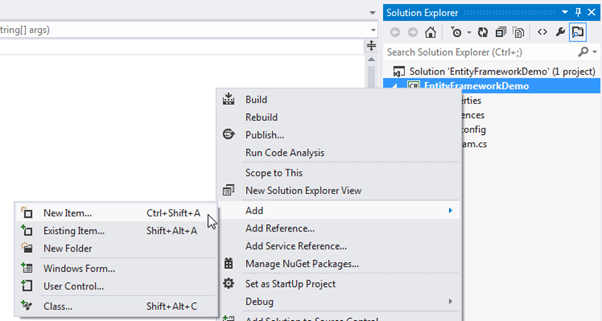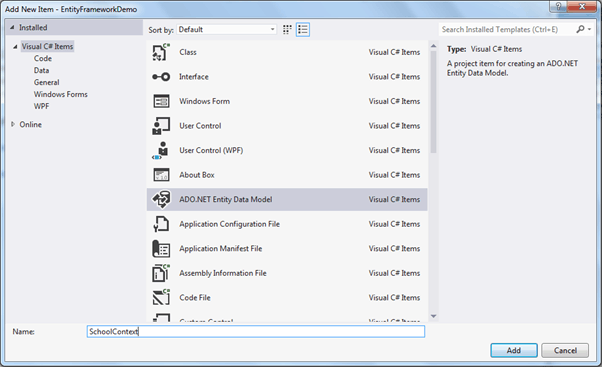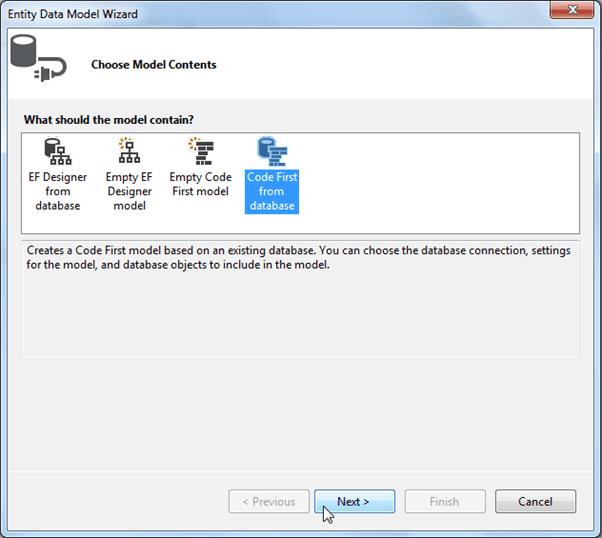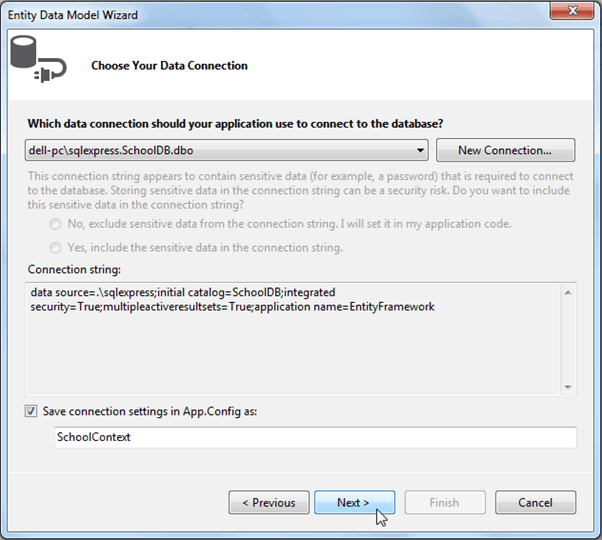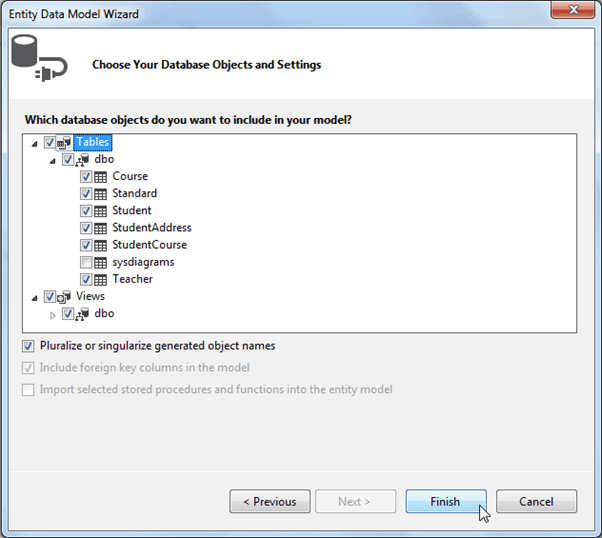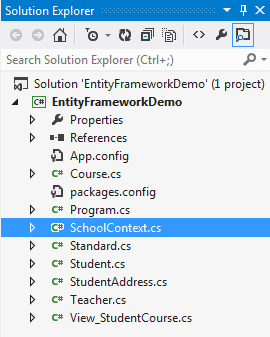EntityFramework Code-First 简易教程(十一)-------从已存在的数据库中映射出表
怎样从一个已存在的数据库中映射表到 entity 实体?
Entity Framework 提供了一个简便方法,可以为已存在的数据库里的所有表和视图创建实体类(entity class),并且可以用 DataAnnotation 特性和 Fluent API 来配置。
首先,右键你的 Visual Studio 项目 -> 添加 -> 新建项目:
选择 ADO.NET实体数据模型(ADO.NET Entity Data Model ),并指定模型名称(这个名称将会是 contenxt 类的类名),点击添加。
然后将会打开 Entity数据模型(Entity Data Model)的向导页面,选择 Code first from database ,然后点击下一步。
如果下拉列表中没有你想包含的数据库,点击 New Connection 来为已存在的数据库创建一个数据库链接。选择好了,点击下一步。
选择你想要映射成类的表或视图,点击完成。
然后EF就会创建所有你选择的表或视图的实体类。
如下所示,每当你映射一个数据库进来的时候,EF都会创建一个对应的 context 类(使用 Fluent API 配置)。
namespace EFDemo { using System; using System.Data.Entity; using System.ComponentModel.DataAnnotations.Schema; using System.Linq; public partial class SchoolContext : DbContext { public SchoolContext() : base("name=SchoolContext2") { } public virtual DbSet<Course> Courses { get; set; } public virtual DbSet<Standard> Standards { get; set; } public virtual DbSet<Student> Students { get; set; } public virtual DbSet<StudentAddress> StudentAddresses { get; set; } public virtual DbSet<Teacher> Teachers { get; set; } public virtual DbSet<View_StudentCourse> View_StudentCourse { get; set; } protected override void OnModelCreating(DbModelBuilder modelBuilder) { modelBuilder.Entity<Course>() .Property(e => e.CourseName) .IsUnicode(false); modelBuilder.Entity<Course>() .HasMany(e => e.Students) .WithMany(e => e.Courses) .Map(m => m.ToTable("StudentCourse").MapLeftKey("CourseId").MapRightKey("StudentId")); modelBuilder.Entity<Standard>() .Property(e => e.StandardName) .IsUnicode(false); modelBuilder.Entity<Standard>() .Property(e => e.Description) .IsUnicode(false); modelBuilder.Entity<Standard>() .HasMany(e => e.Students) .WithOptional(e => e.Standard) .WillCascadeOnDelete(); modelBuilder.Entity<Standard>() .HasMany(e => e.Teachers) .WithOptional(e => e.Standard) .WillCascadeOnDelete(); modelBuilder.Entity<Student>() .Property(e => e.StudentName) .IsUnicode(false); modelBuilder.Entity<Student>() .Property(e => e.RowVersion) .IsFixedLength(); modelBuilder.Entity<Student>() .HasOptional(e => e.StudentAddress) .WithRequired(e => e.Student) .WillCascadeOnDelete(); modelBuilder.Entity<StudentAddress>() .Property(e => e.Address1) .IsUnicode(false); modelBuilder.Entity<StudentAddress>() .Property(e => e.Address2) .IsUnicode(false); modelBuilder.Entity<StudentAddress>() .Property(e => e.City) .IsUnicode(false); modelBuilder.Entity<StudentAddress>() .Property(e => e.State) .IsUnicode(false); modelBuilder.Entity<Teacher>() .Property(e => e.TeacherName) .IsUnicode(false); modelBuilder.Entity<Teacher>() .HasMany(e => e.Courses) .WithOptional(e => e.Teacher) .WillCascadeOnDelete(); modelBuilder.Entity<View_StudentCourse>() .Property(e => e.StudentName) .IsUnicode(false); modelBuilder.Entity<View_StudentCourse>() .Property(e => e.CourseName) .IsUnicode(false); } } }



